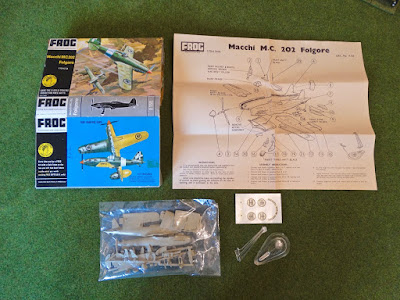
KEITH'S WARGAMING BLOG. This blog has been created to share my exploits in the hobby of wargaming. I game in the WW2, Seven Years War, Napoleonic and Ancient periods. The blog also contains a few details of my book 'Airborne Armour'. Please don't quit the site without leaving a comment, even if not related to a specific post. Most wargamers have something interesting to say about the hobby!
Followers
Monday, 28 December 2020
Built Up Areas - Horse and Musket Wargaming
Wednesday, 2 December 2020
Some 'Honours of War' Action
Now then. I will be the first to admit that my last post wasn't the most exciting I have ever written. Unfortunately, my actual gaming exploits have been very limited of late. However, over on the Honours of War website some rather more dedicated gamers have been developing and playing out a number of excellent scenarios, which deserve a wider audience.
Furthermore, here in the UK, today is the first day of an easing in our lockdown, and it will be possible for some face to face gaming to re-commence (depending on which tier you're in). So perhaps a bit of inspiration wouldn't go amiss. Therefore, here are links to two particularly good recent scenarios which I heartily recommend.
Thursday, 26 November 2020
Ruined Houses And Train Tracks
Friday, 6 November 2020
The Battle of The Simbach Bridge.
Well, the usual apologies are appropriate for the rather long gap between this and the last proper wargaming post on this blog. I have to admit the wargaming flame has been burning rather low the last couple of months, and the excuse is the common one - the intrusion of what we like to call 'real life'. In my case, this mostly consisted of the negotiations that led to me retiring in late September, and the consequent downsizing to a new house.
Let me reassure readers that wargaming in our new smaller residence can continue - my usual 6' x 5' table will fit well in the dining room, although anything bigger might be a problem. And I have a 'study' that's a bit bigger than my previous 'enhanced cupboard'. I may even be able to have an armchair in there when the appropriate rearrangements have been concluded. Then, world beware!
But enough of domestic matters. As November came around, I awoke from my lethargy and started to take my hobby seriously again. And top priority was a Napoleonic game to playtest the latest updates to Shadow of the Eagles. Once again my old buddy Roy was willing to help out, with table space at his home and his wonderful Hinton Hunt armies. I sketched out a quick scenario, including the map as below, but left Roy to choose the armies and year of the game. I was wonderfully surprised and pleased to see, on my arrival, that he had chosen Austria vs. Bavaria in 1809, an original and fascinating choice. Napoleonics without the French? Who'd have thought it possible!
Thursday, 24 September 2020
Cotswold Wargaming Day Cancelled
Just the briefest of posts to announce the demise of this year's Cotswold Wargaming Day, which was to be held on October 18th. Just another casualty of Covid 19 I'm afraid.
I'm hoping to try again in Spring 2021. Let's hope things are looking up by then.
Wargaming has been on the back burner recently, due to a tough time at work and a house move. Normal service will be resumed shortly.
'Til next time!
Monday, 27 July 2020
Partizan Press to publish 'Shadow of the Eagles'
 |
| Napoleon at Wagram, Horace Vernet OR - "These rules are no good. I can see something better on the way." |
Tuesday, 7 July 2020
Airfix Nostalgia Project - The Italian Job
Sunday, 28 June 2020
Little Wars TV
Thursday, 25 June 2020
Counter-Battery Fire
Tuesday, 23 June 2020
The Battle of Ostrolenka, 16th February 1807
 |
| © Greg Wagman |
 |
| The battlefield from the south-east, with Ostrolenka top left, and the starting units of both sides in position. |
 |
| The French emerge from Ostrolenka, but find themselves a little over-faced as the Russians come into view attacking over the 'sandy hills'. |
Wednesday, 10 June 2020
Airfix Nostalgia Project - Part 2
Even better, this was a 1970s boxed kit from FROG. Ah, FROG - that name got my nostalgia meter swinging towards the red. Cost? Fifteen quid including postage from the fine people at Kingkit. It seemed an excellent way to finish up the project - I had pretty good memories of making the old FROG kits, as they often tackled the more esoteric aircraft subjects. I still fondly remember making their 'Gloster Whittle' kit, which lingered in my collection long after many others had been disposed of.
So the order went off, and as soon as I received it and opened the parcel I was very glad I'd made the investment. Here was more nostalgia, in spades. Anyone remember that the old FROG boxes opened out into a 'working tray'? I kept my modelling stuff in one for years when I was a lad.
What impressed me in particular was the high quality of the model itself - lovely moulding, no flash, good fit of parts. Good service as usual from Kingkit - I recommend these guys if you yourself fancy a bit of plastic kit nostalgia. A nice website, reasonable prices and every kit checked for completeness.
Can't wait to get started!
Thursday, 14 May 2020
Free SYW Rules: Post of Honour v.9
I hope you find the rules of interest. If you visit the Honours of War website, you can find a discussion board dedicated to PoH.













































